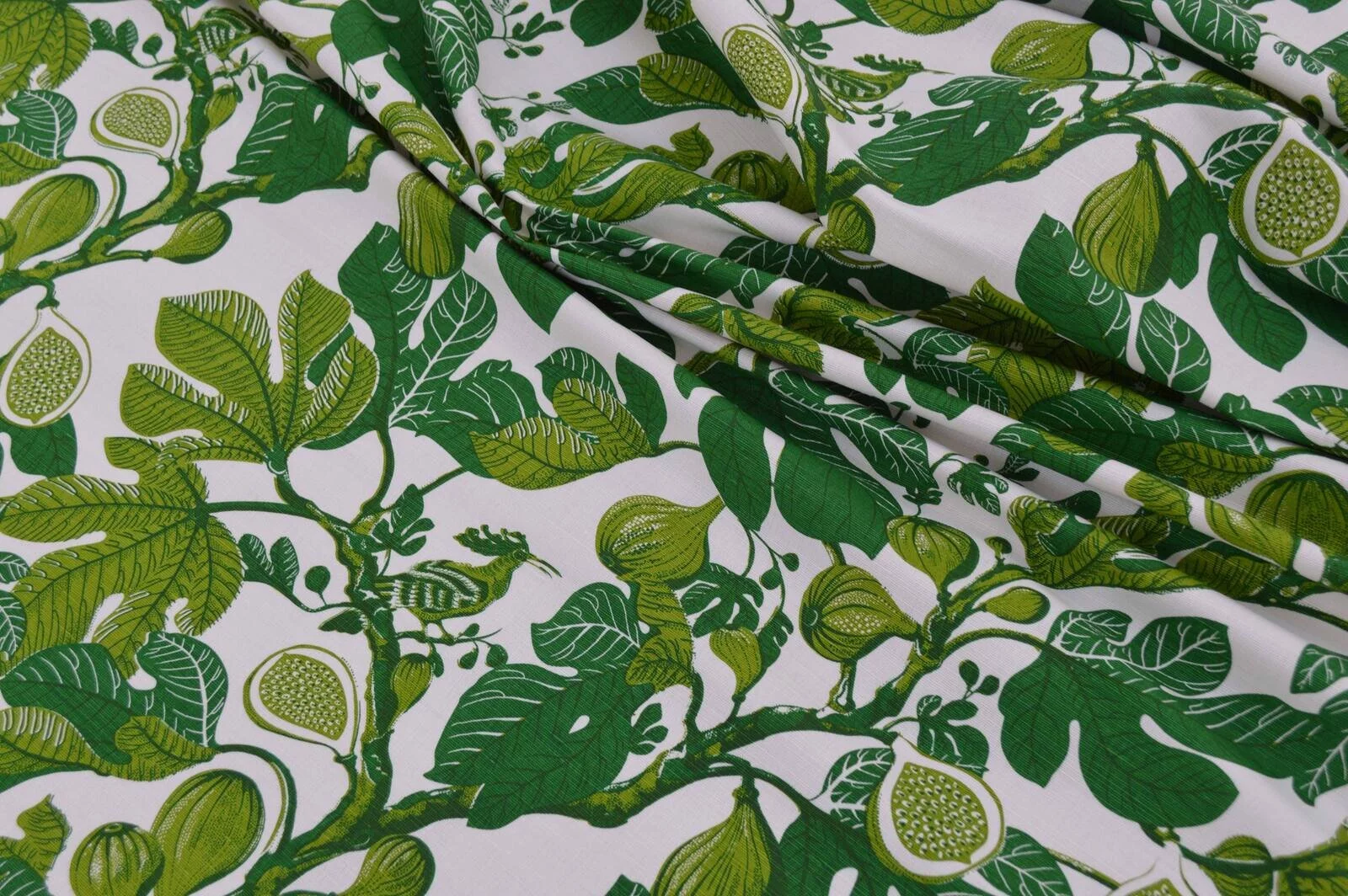In Conversation with Fanny Shorter
Ahead of Palm Beach Design Days, hosted by Freeman’s I Hindman on January 30, we invite you to our West Palm Beach gallery and saleroom, which is located adjacent to the Norton Museum of Art. Elizabeth Marshman, Associate Vice President in the region, speaks with renowned British fabric and wallpaper designer Fanny Shorter. Her lively designs are showcased in our offices as part of this week-long celebration of all things decorative, design, and architecture-related.
E: Fanny, thank you for working with us! Your fabrics and wallpapers, with their gorgeous and vibrant colorways, seem ideally suited to the climate in Palm Beach despite being created in England (!). Can you tell us about the inspirations for your designs?
F: I was very excited to be asked, so thank you! Yes, in fact, sometimes I wonder if we’re a bit too vibrant for our somewhat muted weather in the UK. But thankfully, we’ve begun to embrace color and pattern here in a much more enthusiastic way, so it all worked out. I studied illustration, and working with a narrative has always been my greatest inspiration. Recreating the feeling or atmosphere visually that a piece of text evokes for me mentally is something I come back to regularly, and my work is often initially inspired by a strong narrative. I love a fauvist color palette, traditional printing, storytelling, book illustrations from the turn of the century, and field guides. My husband collects antiques, mainly 18th-century porcelain and silver, and while I try to encourage dealing rather than collecting, his reluctance means our house is full of his beautiful things.

Birds and Beasts Ionian Blue Wallpaper
E: Palm Beach Design Days is a hub for everyone, from enthusiasts to professionals, to engage with the latest trends and industry issues. Share how you began your journey in this field and what advice you would offer to aspiring young designers.
F: It happened gradually and somewhat unintentionally. I worked as an illustrator for nearly 10 years before launching my own line. I learned to screen print in college, and it truly inspired me. I started experimenting with printing my own designs, beginning with paper and then moving to textiles. I began selling cushions and prints that I had designed and made, and I loved working on my own concepts and ideas. I printed my first fabric by the yard in 2015, and it has grown from there. My advice to young designers is to take risks, discover what makes your designs unique, hold onto that, and be ready for it to take time. The industry is a bit of a slow burn, and you must invest a lot into a design long before you find out if it’s worth it!

Birds and Beasts Sand Wallpaper
E: How do you balance your creativity and artistic impulses with the commercial aspects of designing? Were there any designs that surprised you when you released them?
F: Even though I now work according to my own briefs, I still have to be somewhat guided by what designers actually want to use. However, I’m always pleasantly surprised by what proves popular, and usually, thankfully, it’s the designs I've enjoyed creating the most. Margo is our best-selling print, and before I committed to the final design, we considered both its current large repeat and a much smaller scale. I thought the smaller version would be more usable, but I’m so glad we went with the larger scale; it’s being used in a very different way and has become our signature print.

Fig Cypress Fabric
E: One of the aspects we appreciate about your work is the hand-printing and the remarkable life it imparts to the finished product. How did you scale up production for projects and commissions on such a monumental level?
F: Hand screen printing is what initially drew me into this industry. I love the variation and depth you get from screen-printed fabric. The colors are so deep and vibrant, and when you hold it, you can truly feel how it was produced; that connection is quite important to me. While I used to hand print every piece, that method doesn’t scale easily. Now, our fabrics are printed using a gali, which is a hand-operated carriage that holds the screen and moves it along the length of the fabric to print. It’s no longer purely hand printed, but it still retains the depth of print and many of the nuances.
E: Who do you admire the most in the world of decoration and design? If you could collaborate with any US designer on a project, who would that be?
F: I have long admired Ben Pentreath. When I worked in London, his office and shop were around the corner from me. His designs are playful and progressive but retain all the love and influence of the past. In the US, I have followed Meta Coleman for a long time and love her designs. We have many American clients, and they use our fabrics in a way that is so different from the UK, which I love, often completely fearlessly.